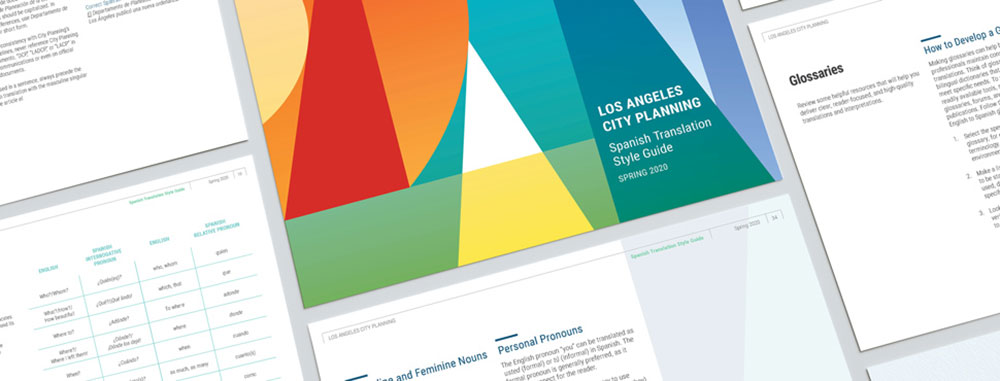Language Access: Inclusive Planning in Los Angeles

To remove the language barriers that prevent Limited English Proficient (LEP) Spanish speakers from fully participating in the planning process, the Los Angeles Department of City Planning recently developed a Spanish Translation Style Guide standardizing the translation of public-facing materials.
Language Barriers Hinder Planning Participation
According to the American Community Survey, nearly 700,000 residents — 17 percent of the city's population — identify themselves as LEP Spanish speakers. "Limited English Proficient" is the U.S. Census Bureau's term for individuals who do not speak English as their primary language and who have a limited ability to read, write, speak, or understand English.
Stakeholders who are LEP may often have trouble communicating with planners working on policies or projects in their communities. As a result, they might not be able to understand vital planning-related information or provide valuable input on land use issues that impact their lives.
Regrettably, such linguistic barriers have existed throughout the history of Los Angeles — and to a broader extent, the history of the southwestern United States. Spanish-speaking communities have often been excluded from participating in conversations about the future of their neighborhoods, resulting in land use policies and zoning practices that have reinforced racial segregation, poverty, poor health outcomes, and a distrust of government.

Two community stakeholders complete a survey during a Boyle Heights Community Plan Update open house. Image Los Angeles City Planning
Spanish Translation Guide Enhances Planning Inclusivity Efforts
To address this legacy of disenfranchisement, City Planning is challenging itself to redefine what it means to carry out effective engagement in Spanish-speaking communities. This is especially crucial today, when new public and private investment in formerly redlined communities is resulting in displacement and continues to spur fears of gentrification.
The Spanish Translation Style Guide offers a library of best practices for the translation of outreach materials. A cornerstone of City Planning's broader inclusive outreach strategy, it provides a set of guidelines for orthography, grammar, and vocabulary to bolster the consistency and quality of translated documents.
Since the release of the translation guide in the spring of 2020, the department's team of bilingual planners has used the resource to ensure consistent and high-quality translation of planning documents across the full range of City Planning's functions and specializations. For example, in the period between May 2020 and September 2021, the department completed more than 100 different translation projects, ranging from eblasts, social media posts, and press releases to landing pages, webinars, and public hearings.
City Planning's effort to standardize translation is an important step towards increasing LEP Spanish speakers' participation in the planning process and making the government more responsive to local needs. Despite the limitations imposed by social distancing in response to COVID-19, the department's language access efforts have led to a tripling in attendance and engagement among LEP Spanish speakers, compared to pre-pandemic levels.
Moving forward, City Planning aims to continue partnering with a number of community-based organizations and Spanish-language media outlets to more effectively reach residents who face socioeconomic and linguistic barriers, with the ultimate goal of collecting input that genuinely represents the diverse voices across the city.
Through efforts such as these, more residents will feel empowered to influence the planning decisions that affect their everyday lives and to work with planners to ensure their communities flourish.
City Planning's inclusive outreach strategy sets a new standard that will prove useful to any planning organization that engages with multilingual communities.

City Planning's Spanish Translation Style Guide is a new tool to broaden support for key programs, respond to citizens' needs, and collect input that represents the diverse voices across the city. Image Los Angeles City Planning

City Planning's Housing Element Update is just one of the work programs that have conducted extensive translation to reach residents facing linguistic barriers. Image Los Angeles City Planning
Top Image: City planners walk a group of Los Angeles' Boyle Heights residents through an open house for a proposed Community Plan.


